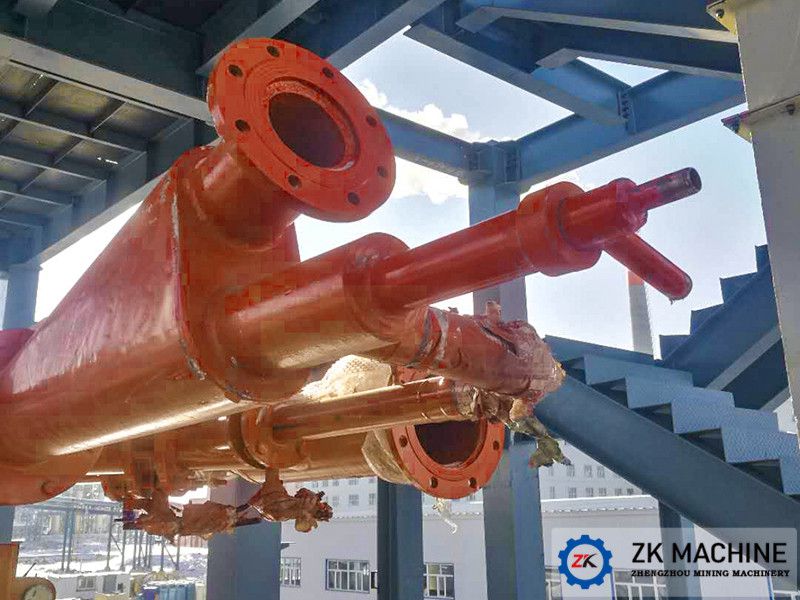- +8618937185591
- +8618937185591
- ec19@zkcorp.com
- +8618937185591


Rotary kiln burner is mainly composed of pipeline, nozzle, metal corrugated compensator, butterfly valve, pressure measuring instrument and protective layer, etc.
Pipeline: from outside to inside, there are axial flow wind, swirl wind Channel, fuel channel and central wind Channel respectively.
Nozzle: it is processed by heat-resistant steel, and the cross-sectional area of the spray outlet of axial flow wind and swirling wind can be adjusted to adjust the spray speed of each channel wind. The whole set of nozzle is the key component to ensure the flame shape.
Axial flow wind (swirl wind) corrugated compensator: it is the main component connecting the inner and outer pipelines of axial flow wind, sealing and adjusting the shape of flame.
Butterfly Valve: used to adjust the air volume.
Pressure measuring instrument: indirectly display the air outlet speed in the burner.
The working principle of the burner:
The combustion is sprayed out by the fuel channel according to a certain diffusion angle, and is transmitted to a fairly high momentum and momentum moment by the neighboring combustion-supporting wind. The swirling wind inside and the sprayed fuel are mixed in a high speed and spiral forward, meeting the axial wind beam emitted at a high speed. The insertion of axial flow wind beam further enhances the mixing of fuel and wind, and can adjust the divergence degree of flame. It can adjust the length and thickness of flame as needed to reach the desired flame shape. The function of the central wind is to promote the combustion of a small amount of fuel and CO in the central part, so as to make the combustion more sufficient and stabilize the flow. Due to this Combustion mechanism and the high speed of swirling wind and axial wind, combustion is very rapid and complete.
Operating procedure of burner
First start the exhaust fan at the end of the kiln, adjust the frequency to about 30HZ for more than 10 minutes, and then reduce the frequency to 5~10HZ before ignition to ensure slight negative pressure in the kiln. Special attention should be paid to the operating procedures of ignition first and then air supply when the gas fuel is ignited. Put an end to the wrong operation of sending air first and then igniting.
Burner maintenance
1. The ejector end of each pipeline is a nozzle made of heat resistant steel. The nozzle is in a high temperature state for a long time, especially if the kiln stops and the Air stops suddenly during combustion, the front end face of the burner will directly bear the heat radiation of the high temperature and scorching materials in the kiln, and will be oxidized and damaged over time. In order to prolong the service life of the nozzle, the following points should be paid attention:
(1) when the combustion is stopped, the combustion should be stopped and the wind should be stopped once. Only when the temperature in the kiln drops to 300℃ can the wind be stopped once;
(2) the integrity of the castable on the head is the premise to ensure the normal operation of the burner, and timely measures should be taken when the castable falls off;
(3) when the kiln is stopped, enter the kiln to check the abrasion, deformation and coking of the burner, and handle it in time and replace it if necessary.
2. Attention should be paid to the sealing of each interface during use. If there is air leakage, it should be handled.
3. After successful ignition, the ignition line should be pulled out 1 meter away from the head to prevent burning loss.
4. When replacing the burner, ensure the concentricity between the nozzles, otherwise it is difficult to scale axially between the layers.
5. The correct pouring and maintenance of castable materials are especially important for the normal operation and service life of the burner: firstly, the castable materials must use the special castable materials of the burner; Secondly, the castable materials must be checked every time the kiln is shut down for major repair and minor repair; If there are cracks and gaps, the castable materials must be poured again.
Previous:Installation of Ball Mill Liner